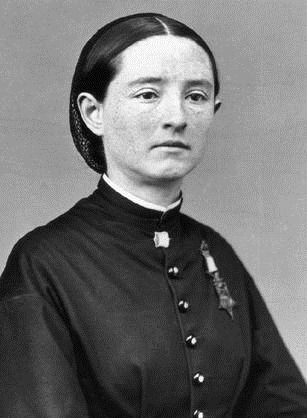This is your morning Open Thread. Pour your favorite beverage and review the past and comment on the future.
Find the past “On This Day in History” here.
October 12 is the 285th day of the year (286th in leap years) in the Gregorian calendar. There are 80 days remaining until the end of the year.
The Bavarian royalty invited the citizens of Munich to attend the festivities, held on the fields in front of the city gates. These famous public fields were named Theresienwiese-“Therese’s fields”-in honor of the crown princess; although locals have since abbreviated the name simply to the “Wies’n.” Horse races in the presence of the royal family concluded the popular event, celebrated in varying forms all across Bavaria.
Oktoberfest is a 16-18 day festival held each year in Munich, Bavaria, Germany, running from late September to the first weekend in October. It is one of the most famous events in Germany and the world’s largest fair, with more than 5 million people attending every year. The Oktoberfest is an important part of Bavarian culture. Other cities across the world also hold Oktoberfest celebrations, modelled after the Munich event.
The Munich Oktoberfest, traditionally, takes place during the sixteen days up to and including the first Sunday in October. In 1994, the schedule was modified in response to German reunification so that if the first Sunday in October falls on the 1st or 2nd, then the festival will go on until October 3 (German Unity Day). Thus, the festival is now 17 days when the first Sunday is October 2 and 18 days when it is October 1. In 2010, the festival lasts until the first Monday in October, to mark the 200-year anniversary of the event. The festival is held in an area named the Theresienwiese (field, or meadow, of Therese), often called Wiesn for short, located near Munich’s centre.
Visitors eat huge amounts of traditional hearty fare such as Hendl (chicken), Schweinsbraten (roast pork), Schweinshaxe (ham hock), Steckerlfisch (grilled fish on a stick), Würstl (sausages) along with Brezn (Pretzel), Knödel (potato or bread dumplings), Kasspatzn (cheese noodles), Reiberdatschi (potato pancakes), Sauerkraut or Blaukraut (red cabbage) along with such Bavarian delicacies as Obatzda (a spiced cheese-butter spread) and Weisswurst (a white sausage).
First hundred years
In the year 1811, an agricultural show was added to boost Bavarian agriculture. The horse race persisted until 1960, the agricultural show still exists and it is held every four years on the southern part of the festival grounds. In 1816, carnival booths appeared; the main prizes were silver, porcelain, and jewelry. The founding citizens of Munich assumed responsibility for festival management in 1819, and it was agreed that the Oktoberfest would become an annual event. Later, it was lengthened and the date pushed forward, the reason being that days are longer and warmer at the end of September.
To honour the marriage of King Ludwig I and Therese of Bavaria, a parade took place for the first time in 1835. Since 1850, this has become a yearly event and an important component of the Oktoberfest. 8,000 people-mostly from Bavaria-in traditional costumes walk from Maximilian Street, through the centre of Munich, to the Oktoberfest. The march is led by the Münchner Kindl.
Since 1850, the statue of Bavaria has watched the Oktoberfest. This worldly Bavarian patron was first sketched by Leo von Klenze in a classic style and Ludwig Michael Schwanthaler romanticised and “Germanised” the draft; it was constructed by Johann Baptist Stiglmaier and Ferdinand von Miller.
In 1853, the Bavarian Ruhmeshalle was finished. In 1854, 3,000 residents of Munich succumbed to an epidemic of cholera, so the festival was cancelled. Also, in the year 1866, there was no Oktoberfest as Bavaria fought in the Austro-Prussian War. In 1870, the Franco-Prussian war was the reason for cancellation of the festival. In 1873, the festival was once more cancelled due to a cholera epidemic. In 1880, the electric light illuminated over 400 booths and tents (Albert Einstein helped install light bulbs in the Schottenhamel tent as an apprentice in his uncle’s electricity business in 1896). In 1881, booths selling bratwursts opened. Beer was first served in glass mugs in 1892.
At the end of the 19th century, a re-organization took place. Until then, there were games of skittles, large dance floors, and trees for climbing in the beer booths. They wanted more room for guests and musicians. The booths became beer halls.
In 1887, the Entry of the Oktoberfest Staff and Breweries took place for the first time. This event showcases the splendidly decorated horse teams of the breweries and the bands that play in the festival tents. This event always takes place on the first Saturday of the Oktoberfest and symbolises the official prelude to the Oktoberfest celebration
In the year 1910, Oktoberfest celebrated its 100th birthday. 120,000 litres of beer were poured. In 1913, the Braurosl was founded, which was the largest Oktoberfest beer tent of all time, with room for about 12,000 guests.
I have very fond memories of Oktoberfest. If you ever have the opportunity to visit Europe, do it in late September because this is a must see and experience.

 The only woman to be awarded the Medal of Honor, America’s highest military honor, was a civilian and a surgeon. Dr. Mary Edwards Walker
The only woman to be awarded the Medal of Honor, America’s highest military honor, was a civilian and a surgeon. Dr. Mary Edwards Walker  The Pentagon is the headquarters of the
The Pentagon is the headquarters of the  On this day in 1776, General George Washington asks for a volunteer for an extremely dangerous mission: to gather intelligence behind enemy lines before the coming Battle of Harlem Heights. Captain Nathan Hale of the 19th Regiment of the Continental Army stepped forward and subsequently become one of the first known American spies of the Revolutionary War.
On this day in 1776, General George Washington asks for a volunteer for an extremely dangerous mission: to gather intelligence behind enemy lines before the coming Battle of Harlem Heights. Captain Nathan Hale of the 19th Regiment of the Continental Army stepped forward and subsequently become one of the first known American spies of the Revolutionary War. On this day in 1776, the Continental Congress formally declares the name of the new nation to be the “United States” of America. This replaced the term “United Colonies,” which had been in general use.
On this day in 1776, the Continental Congress formally declares the name of the new nation to be the “United States” of America. This replaced the term “United Colonies,” which had been in general use.
 The name is linked to Samuel Wilson, a meat packer from Troy, New York, who supplied barrels of beef to the United States Army during the War of 1812. Wilson (1766-1854) stamped the barrels with “U.S.” for United States, but soldiers began referring to the grub as “Uncle Sam’s.” The local newspaper picked up on the story and Uncle Sam eventually gained widespread acceptance as the nickname for the U.S. federal government.
The name is linked to Samuel Wilson, a meat packer from Troy, New York, who supplied barrels of beef to the United States Army during the War of 1812. Wilson (1766-1854) stamped the barrels with “U.S.” for United States, but soldiers began referring to the grub as “Uncle Sam’s.” The local newspaper picked up on the story and Uncle Sam eventually gained widespread acceptance as the nickname for the U.S. federal government.


